How To Draw Dungeon Map Furniture
Tutorial: How to draw a bones dungeon map
Update! This and many more tutorials on fantasy and D&D map making is availible also on my website, together with loads of free-to-download maps, check it out — click here!
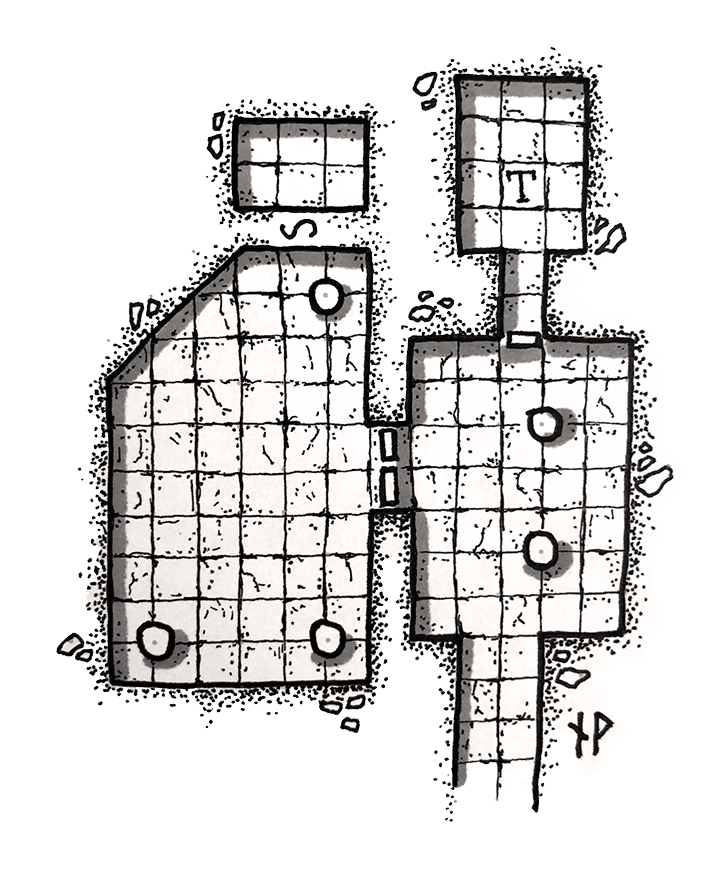
I bask drawing maps for roleplaying games like Dungeons & Dragons. Ever since I was a kid, I enjoyed drawing, specially mystical places like monster strongholds, hole-and-corner lairs and abandoned catacombs. Sometimes when I post my maps online, people enquire me for advice on how to go started, and fifty-fifty though I'm far from an authorization on the subject field, I though a short and simple tutorial could be of help, so here goes!
This tutorial will show you lot how to draw a simple summit-downwardly map, with no special features such as furniture or other objects. You can of grade add together a lot of complication by adding "dungeon dressing", or even depict the map from some other perspective, such equally isometric. But permit's get started with this style.
Note: since this tutorial was published, I've too made a tutorial on how to draw isometric maps, you tin can read it hither: https://medium.com/@niklaswistedt/tutorial-how-to-describe-an-isometric-dungeon-map-dc1a88737be0
The gear
A lot of people prefer to draw digital maps, using tools like Photoshop. I, however, adopt to draw past manus.
Commencement of all, brand certain you have decent tools to work with. For this tutorial, I've used 3 sizes of Micron markers (0.5, 0.1 and 0.05), an ice greyness iv Promarker, a mechanical pencil and a note book with dotted newspaper, from Field Notes (even so, yous could just as well use normal grid paper). None of this stuff is especially expensive, and can be bought online. I don't have a scanner, so all images in the tutorial are taken with an iPhone camera. The end issue has had some work washed in Photoshop (adjusted levels, removing dots).
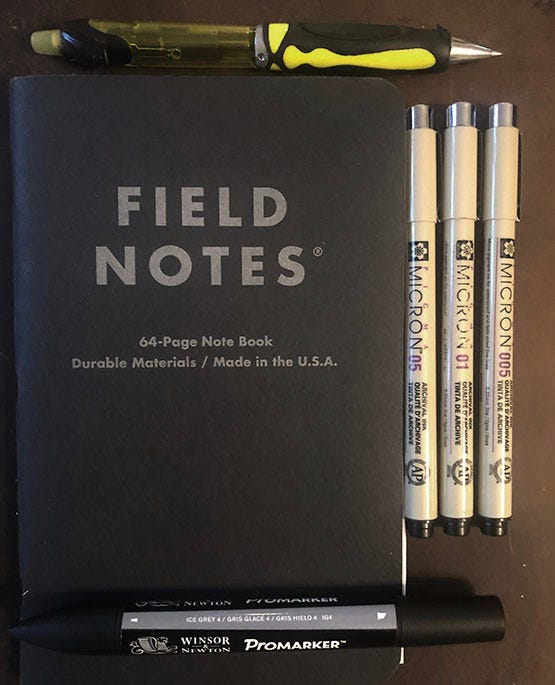
Step one: rough outlines
Start by drawing your dungeon walls with a mechanical pencil. Information technology doesn't have to exist perfect straight lines, and so no demand for a ruler. Imperfect lines gives a nice organic look to the map.
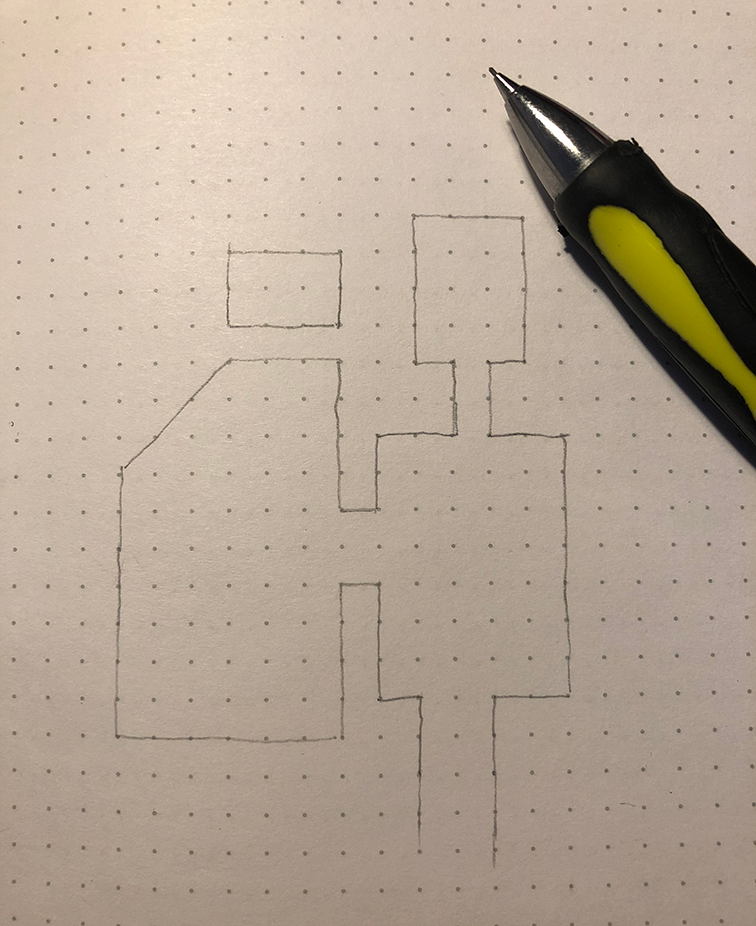
Step two: ink outlines
Utilise a thin (0.1) marker to draw your outlines. Again, it doesn't take to be perfect. Let the ink dry for a minute, and and so erase the pencil lines. This can touch on the inked outlines as well, but no worries, nosotros will have care of that in the next step.
I've also added a couple of doors and some pillars to the dungeon. It's commonly a good idea to add the pillars where flagstones will intersect, to provide some nice contrast, every bit you will see after in the tutorial.
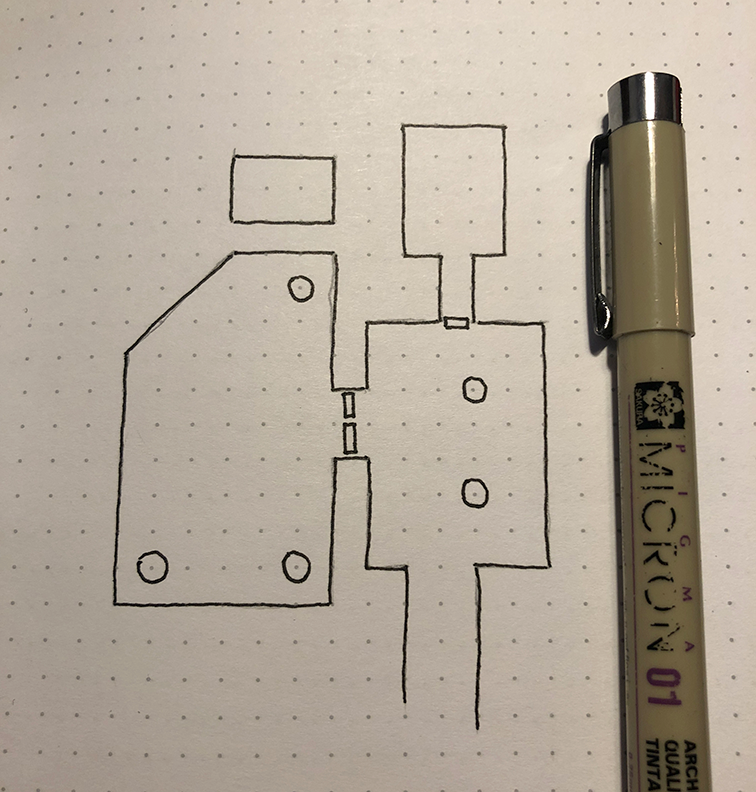
Footstep three: add together weight to outlines
Add weight to your outlines with a thicker marking (0.v)
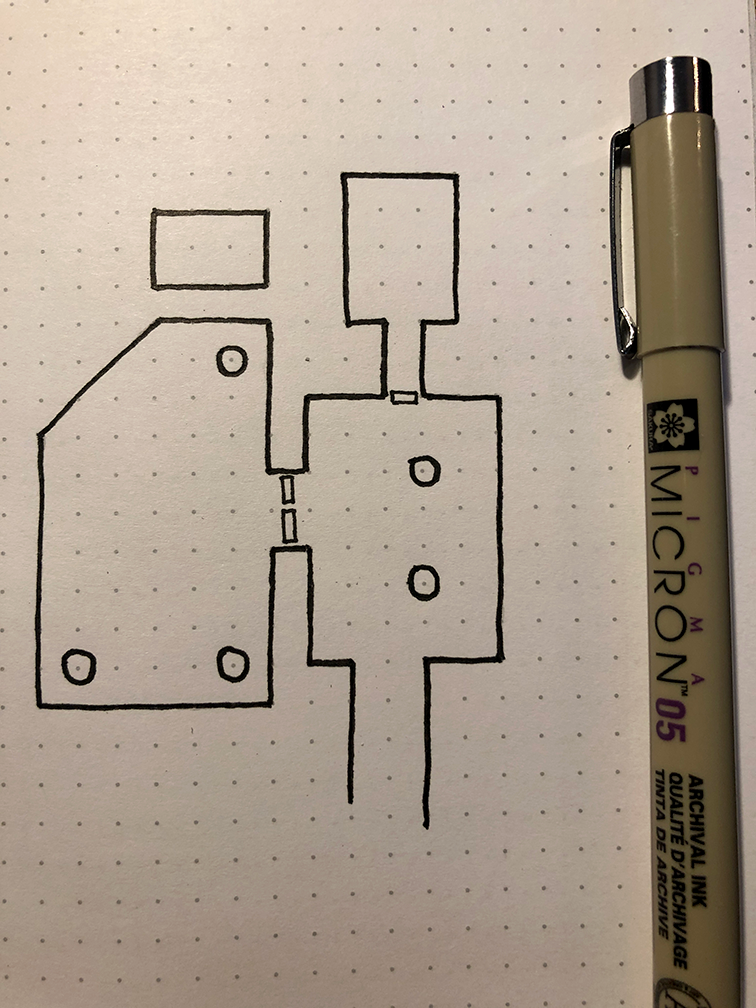
Step iv: draw flagstones
Flagstones are swell. Non only practise they add together nice detail to the dungeon, they also help by providing a grid for the map, making it easier for the dungeon chief to draw information technology on a battle mat should he want to employ miniatures for running a gainsay meet. Use a thin (0.05) marking to depict the lines for the flagstones.
As you can encounter, the pillars provide dissimilarity to the flagstone blueprint, every bit they are placed where the flagstones intersect, and not directly on top of a unmarried flagstone.
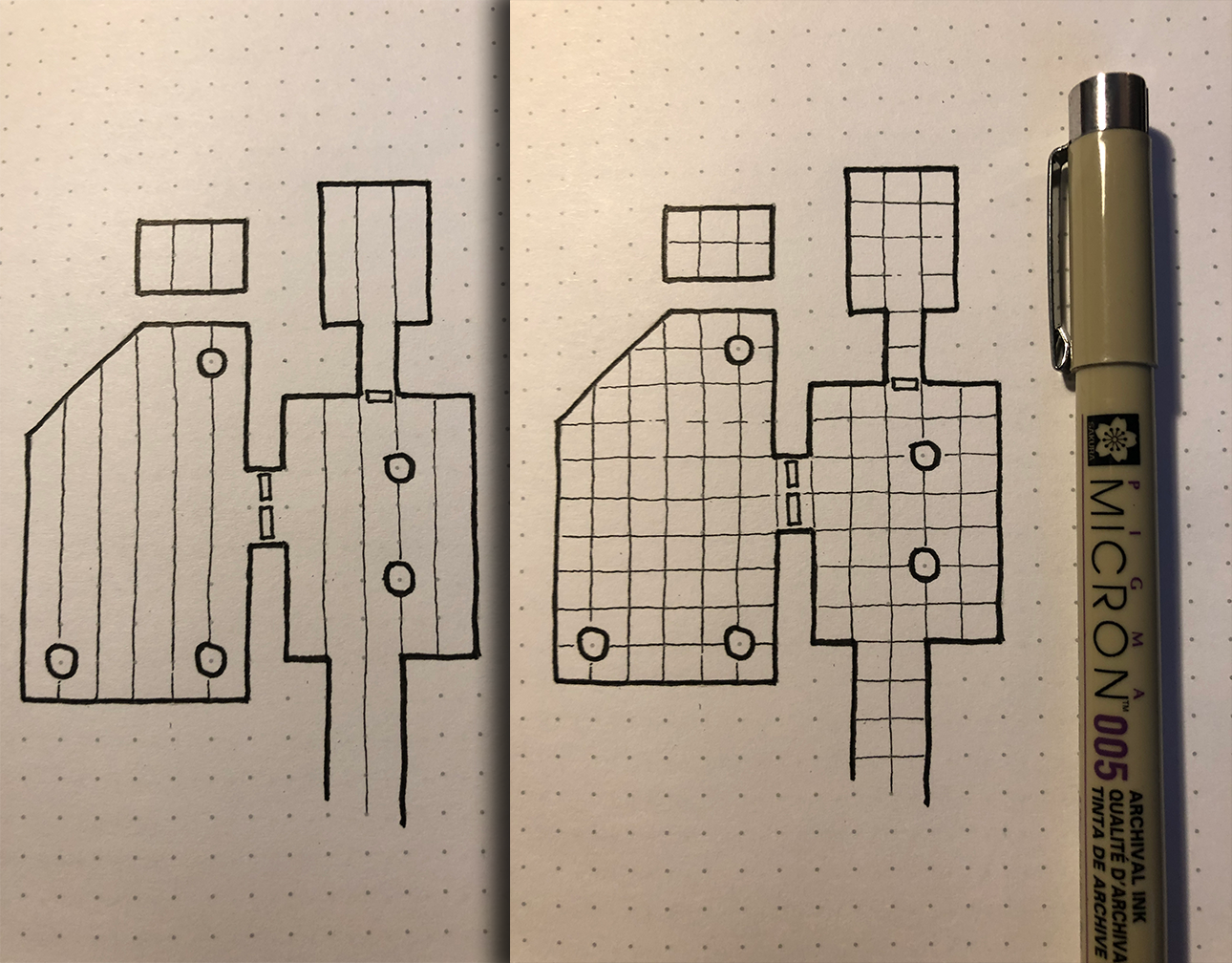
Step five: Add texture
Add some texture to the surface around the dungeon. I like adding some rocks and then employ small dots to provide some contrast. The thought is to accept a higher "dot density" the closer you are to the dungeon wall. Use a 0.1 Micron marking.
I added an "South" to the map, marker out a secret door that the players volition need to search for in order to find.
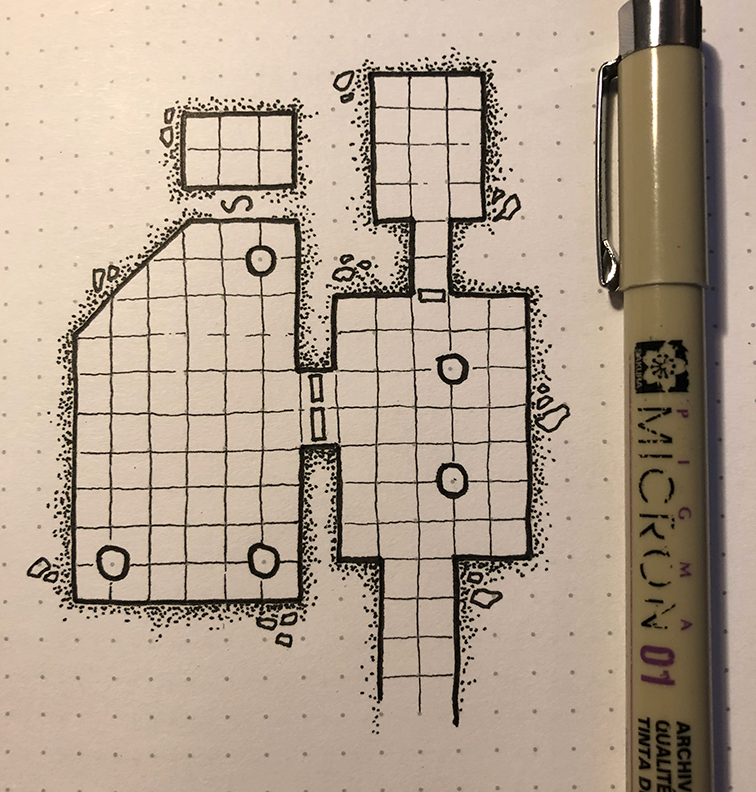
Step six: add texture to flagstones
Add some texture (dots, small scratches, cracks) to the flagstones. Also, randomly emphasise some of the gaps between the flagstones too. Random is the keyword hither: don't repeat patterns as it will await planned and artificial.
Use a thin (0.5) marking for this step.
I decided to add a "T" to one of the flagstones, indicating a trap.
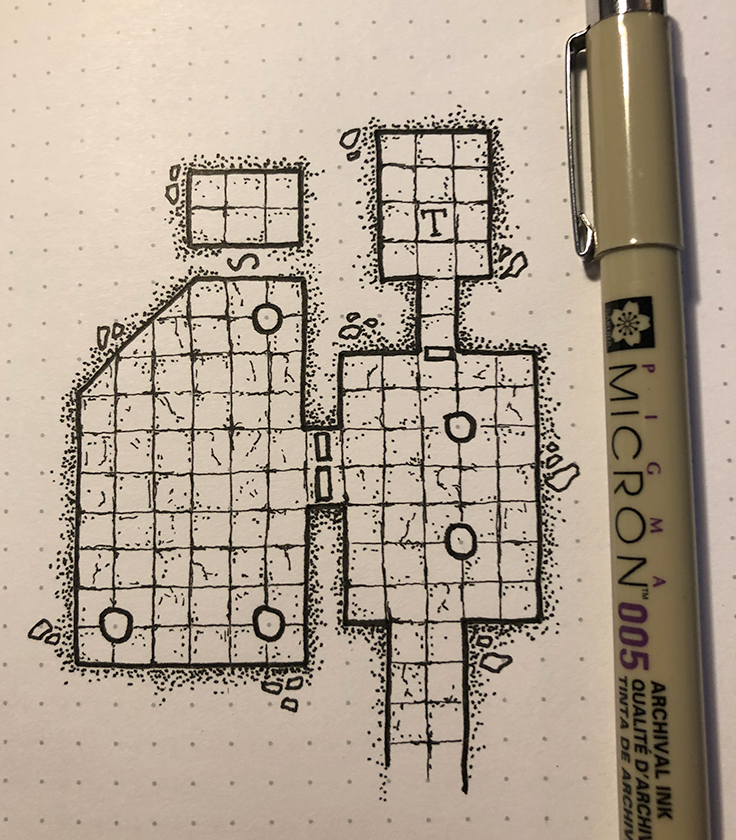
Step seven: add shadows
To add some depth to the map, and making it wait a bit more interesting, I add together some simple shadows to it. First decide where your imagined light source is located, in this case from the upper left corner. Then add together shadows with a mark to the corresponding walls (in this example the upper and left walls). I also added some shadow to the pillars.
Use a grayness Promarker (or similar) for this step.
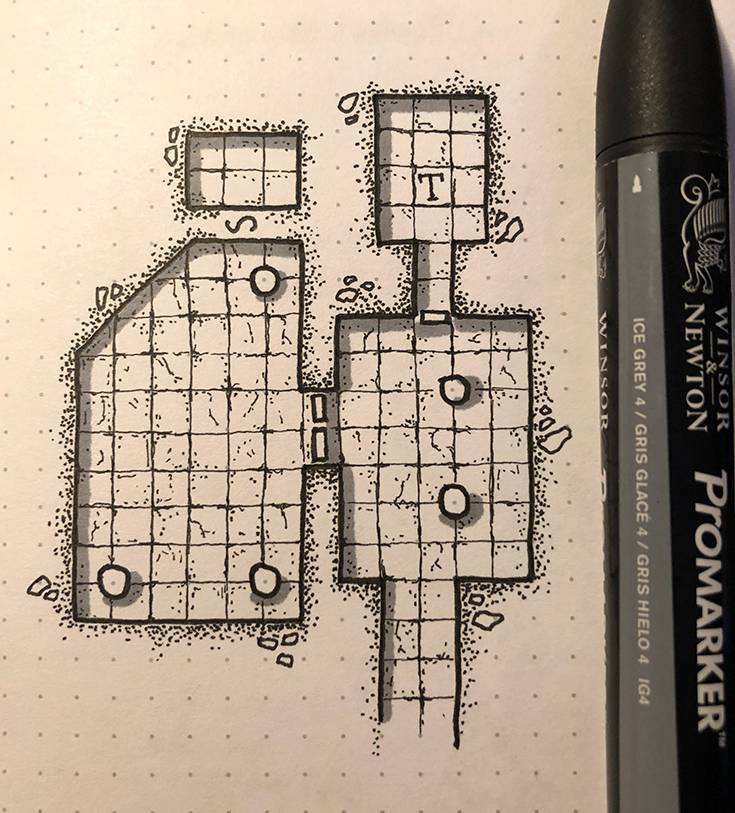
Footstep eight: clean upward
I use my phone to photo the map I've drawn, making sure information technology'due south daylight outside to get a decent picture. Of course, if you lot have a scanner that's a much better alternative. I'm considering buying one, but I'm a fleck lazy, and too have a modest desk.
I and so use Photoshop to work with the levels, and getting the colors right, as well removing some of the dots.
And in that location you go, the terminal result! You now take a dungeon to fill up with monsters, treasure, puzzles and traps. Happy gaming!
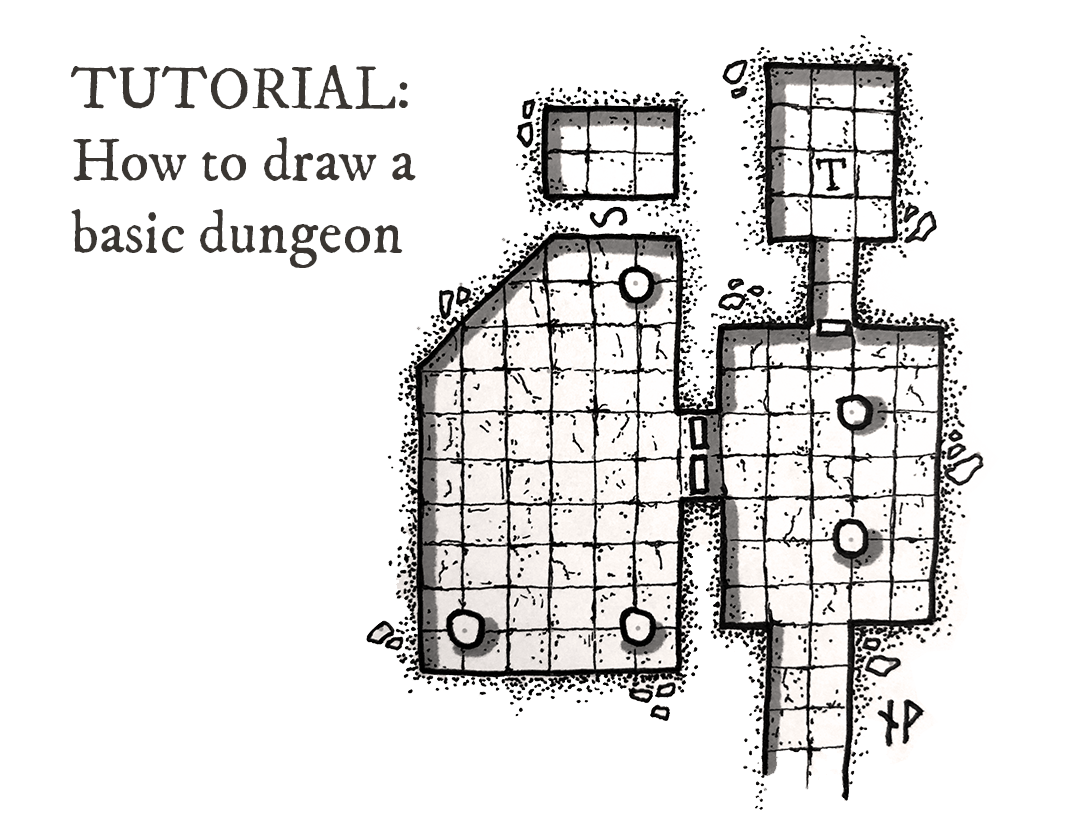
Please leave a comment if you enjoyed this tutorial, and let me know if you have any feedback.
More resource:
I post a lot of my piece of work on my website, at https://world wide web.wistedt.cyberspace/. There you tin can observe many maps and other RPG recources that are free to download for personal utilise.
If you enjoy my maps, delight feel gratis to follow me on Instagram, where I normally post my piece of work: https://www.instagram.com/paths.peculiar/
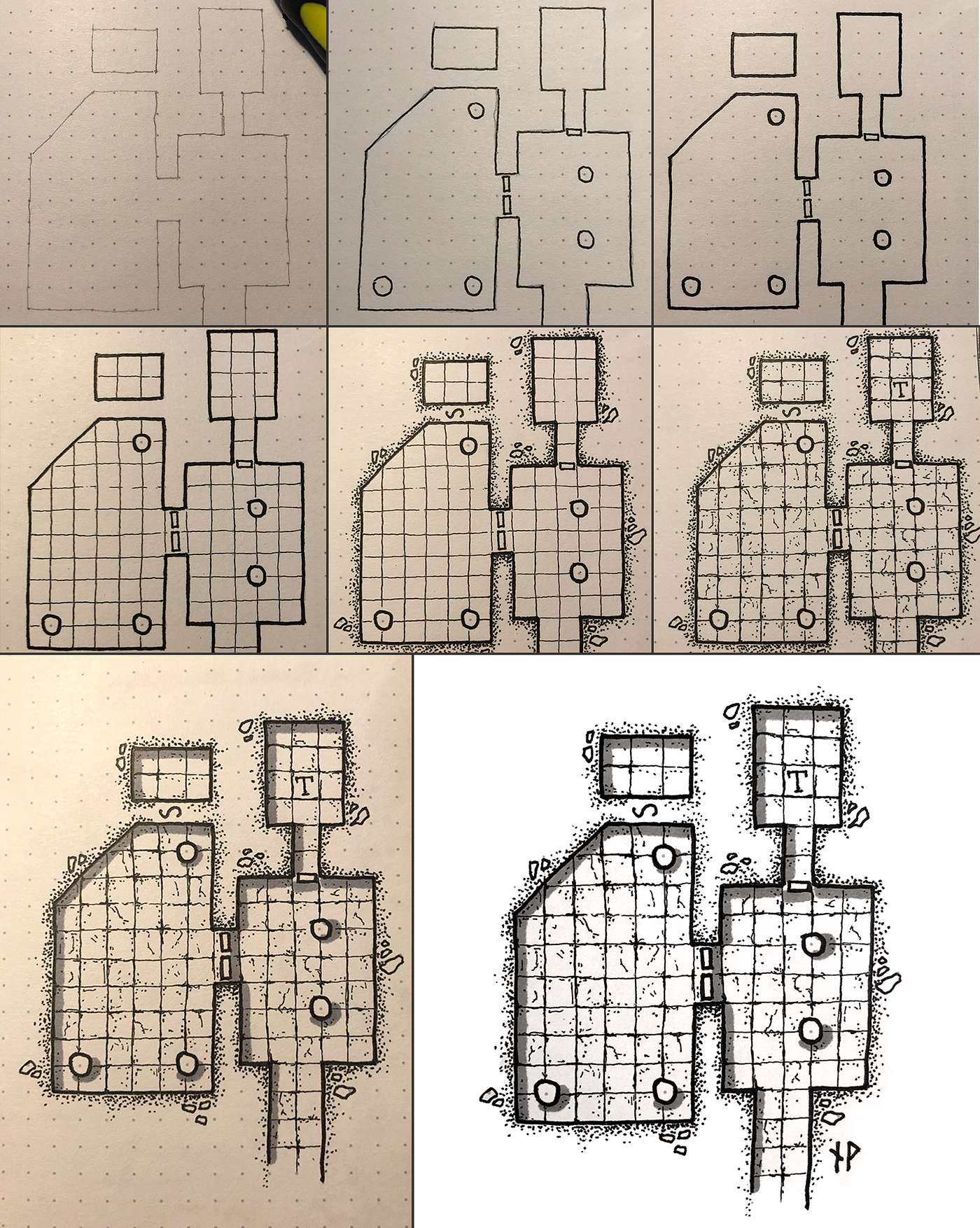
Source: https://medium.com/@niklaswistedt/tutorial-how-to-draw-a-basic-dungeon-map-c9f5c4408327
Posted by: bidwellbitheirstake.blogspot.com


0 Response to "How To Draw Dungeon Map Furniture"
Post a Comment